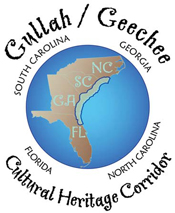 It has been a long process, but the management plan for the Gullah Geechee Cultural Heritage Corridor is finally done. There is only one step left, the Secretary of Interior has to ink in his, or maybe now her, name on a letter of approval. So what lies ahead?
It has been a long process, but the management plan for the Gullah Geechee Cultural Heritage Corridor is finally done. There is only one step left, the Secretary of Interior has to ink in his, or maybe now her, name on a letter of approval. So what lies ahead?
Recently, the Living Landscape Observer caught up with two members of the Gullah Geechee Cultural Heritage Corridor Commission, Veronica Gerald and Ralph Johnson. We talked about the opportunities the commission faces as a standard bearer for a living cultural landscape that stretches over four states. It is a big task to interpret this narrative on such a geographic scale and it is made more complex by the importance of telling the story over time. Gerald was worried that “people only want to interpret us historically.” She noted that the story stretches back across the Atlantic and forward into the present day as the Gullah and Geechee people spread out across the nation. Johnson gave as just one example the history of the Underground Railroad to the south. At one time enslaved people from the region escaped to then Spanish controlled Florida and dispersed from there. The corridor still serves as a cultural hearth for all of the Gullah Geechee people and Gerald and Johnson noted that it is a hearth that is still burning.
Both Commissioners agreed that the national designation, the corridor is one of 49 heritage areas or corridors in the National Park Service, is important because it serves as umbrella arching over the region that is such a significant part of America’s collective heritage. They encouraged the park service to work closely with the commission to interpret the Gullah Geechee experience.
Help is also needed on other pressing issues, for example:
a) Heritage Tourism – How can authentic Gullah Geechee products be marketed to improve the economic position of community members, where so many are now relegated to service positions?
b) Land conservation – How can land traditionally owned by the Gullah Geechee community be protected from development or even from public acquisition?
These are big topics that are probably beyond the know-how of the National Park Service. However, perhaps working together the expertise can be assembled to tackle them. The commission will have an important role as ambassador and translator to help ensure the right outcomes. Of course, all of this if going to require money and it is not going to be done on the meager allowance doled out to National Heritage Areas projects. So add raising money to the list of challenges.
On one thing everyone agrees, the first step is to build awareness and recognition of what the Gullah Geechee Corridor has to offer the nation. So congratulations to the commission for their web site and read the post on the float inaugural parade. Now it is all of our job to promote this good work.


